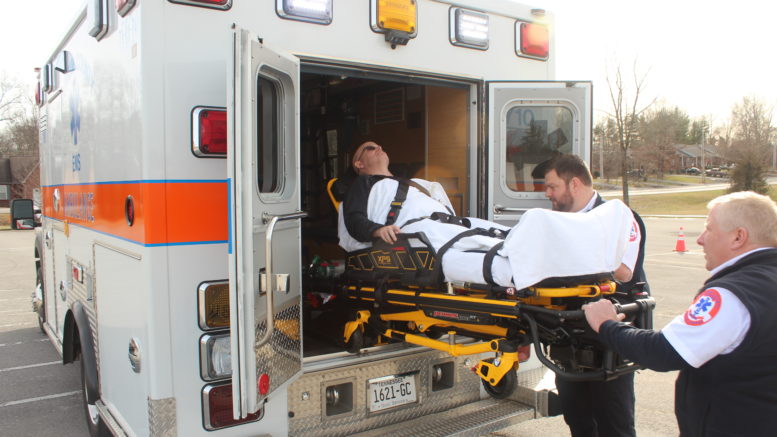EMS INTRODUCES NEW AMBULANCE STRETCHER TECHNOLOGY
New ambulance stretchers include technology to improve patient safety
COOKEVILLE, TENN – As Putnam County grows, the need for public safety services grows as well. In recent years, Putnam County Emergency Medical Services has seen significant changes to the needs of the community. “We have seen our call volume change, of course, but we have also seen a change in the need for patient and crew safety,” explained Deputy Chief Darren Ford. “As we continue to grow, safety is always a priority for us,” he continued.
One way EMS is helping that need is with new technology, in the form of ambulance stretchers. The stretchers are used not only to help transfer patients from the scene or their home into the ambulance, but to treat and transport patients on the stretcher once inside the ambulance as well. This means the stretcher must be built with roadway hazards and crash protection in-mind.
Major Danny Heady explains how much the technology improves services to citizens. “Not only do these cots (as we call them) come with better features for the ambulance crew, but they have several features that are specifically designed for the patient’s comfort and protection during transport. Most notable is the new seatbelt system that’s built in. It helps keep the patient comfortable, but offers more points of connection, which in-turn offers more protections during a hard stop or crash.”
The new features and safety mechanisms are exciting enough for providers, but EMS is especially proud to be able to utilize grant funds for the purchase of these devices. “We have been applying for a grant for four years now to replace our current stretchers,” said Chief Tommy Copeland, who also mentioned the average lifespan of an ambulance stretcher is around seven years. The current fleet has several devices that have been operational over ten years. “As we applied and kept getting turned down for the grants, we approached the County Commission for funding. This year, the Commission approved to fund the replacement of all our units.” Chief Copeland continued, “After we got the money from the County Commission, we found out we were awarded a grant that will cover about one-third the cost of the devices. This will significantly decrease the burden on local taxpayers for this vital equipment.”
The overall cost of the project is $346,000.00, which was split between the Assistance to Firefighter’s Grant and the County funding. Through a formal bid process, Stryker EMS was chosen as the vendor of choice. “The new units came with a seven-year warranty, better batteries and warranties for them, steer locks (which help provide more stability), and their new siderails, which will accommodate larger patients more comfortably,” concluded Heady.
Deputy Chief Ford also expressed great appreciation for PCEMS’ internal cot maintenance team, explaining there is a team of individuals who are diligent about keeping the existing units maintained and performing preventative maintenance. “There is no way that our cots would have lasted as long as they did without the work of our cot maintenance team. They’ve done a great job!” Ford stated
# # #
Attached Photo (L to R):
Simulated Patient – Chad Perkins
Paramedic Jason Dyer
Paramedic Stanley Vanhooser

